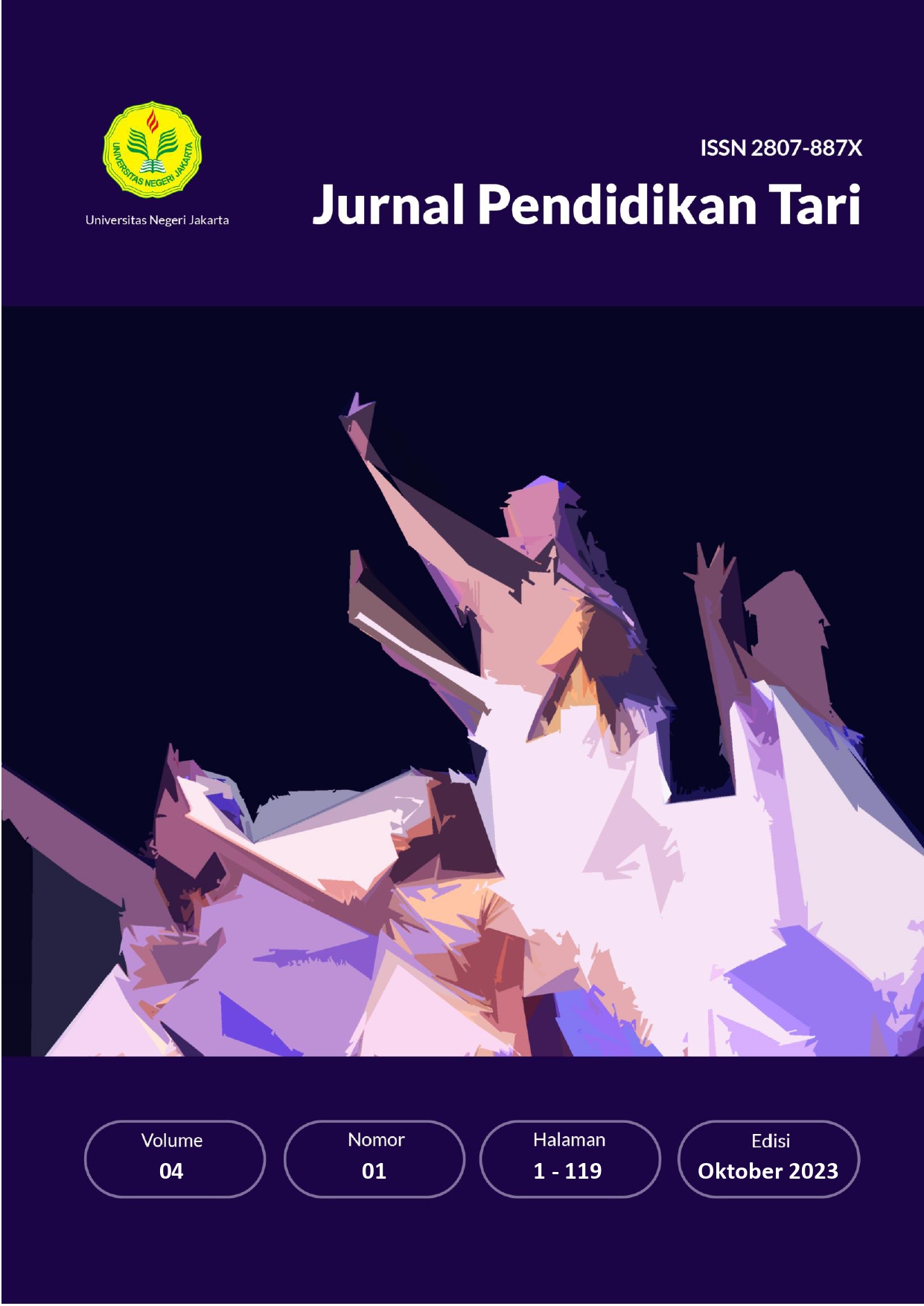Building the Character of Adaninggar in the Menak Wayang Golek Performance According to Maurice Merleau-Ponty's Perceptual Phenomenology Theory
DOI:
https://doi.org/10.21009/JPT.413Keywords:
Building Characters, Menak Wayang Golek Performance, Perception Phenomenology Theory, Maurice Merleau-PontyAbstract
This thesis examines the problem of building the character of Adaninggar in the Menak Wayang Golek show entitled Putri Kaelani. The purpose of this study was to find out and analyze the Menak Wayang Golek show entitled Putri Kaelani using Maurice Merleau-Ponty's Perceptual Phenomenology theory. The benefits of this research are able to support the improvement of the quality of dancing for the students of Sanggar Surya Kirana. The research method used is qualitative research with ethnographic and autoethnographic approaches. The conclusion that can be, that the process of building the character of Adaninggar according to Maurice Merleau-Ponty's Perception Phenomenology is how the process of gaining experience as a whole in order to get a perception of the world of performing arts. The research data can be categorized into four data, namely the general description of the Surya Kirana studio, the form of presentation of the menak puppet show entitled Putri Kaelani, the characters in the menak puppet show entitled Putri Kaelani, the process of building the character of Adaninggar. The four data above will be analyzed using Maurice Merleau-Ponty's Perception Phenomenology theory, supported by Richard Boleslavsky's character building method, through the first six lessons for aspiring actors.


